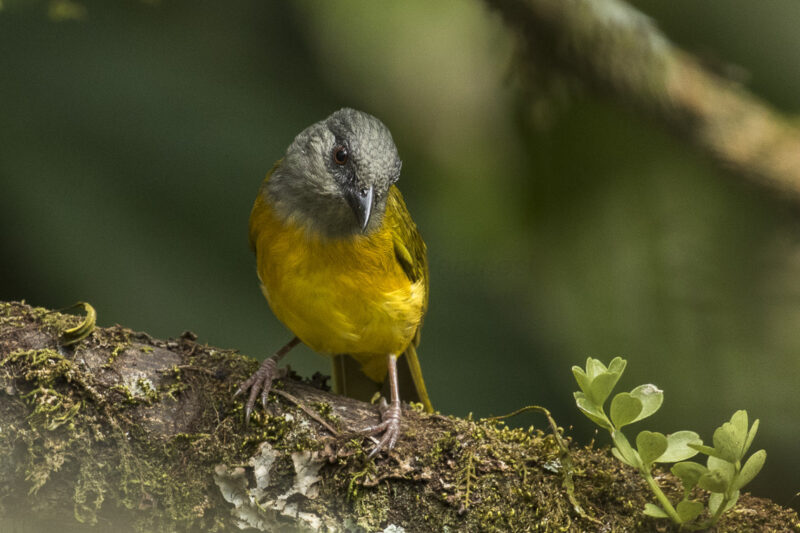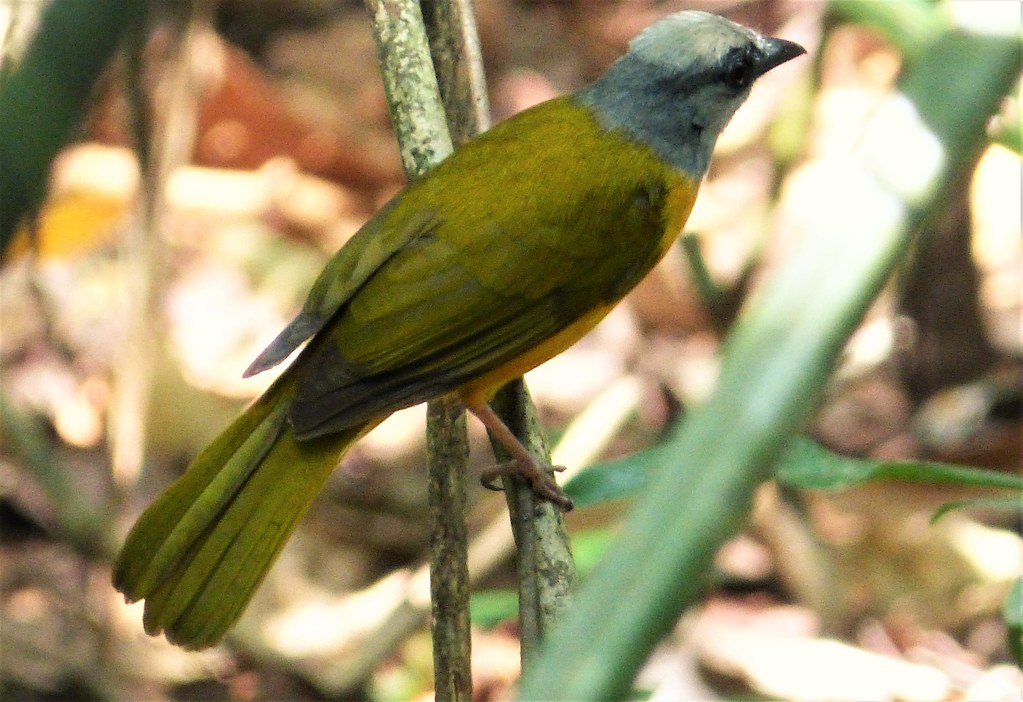The Gray-headed Tanager.

Scientifically known as Eucometis penicillata, is a majestic bird that falls under the Animalia Kingdom and has the following taxonomic classification:
Phylum Chordata
Class Birds
Order Passeriformes
Family Thraupidae
Genus Eucometis
This bird species boasts a breathtaking slate gray head and neck, a paler gray throat, and olive green upper regions. It also has a deep yellow underbelly with an ochraceous tint on the breast and side and olive on the flanks. Sometimes, its chest and side have a slight olive stripe. Meanwhile, the juvenile individuals possess an olive green head and throat, underparts, and a tawny orange breast with a thick olive stripe. The Gray-headed Tanager has a body length of 16 cm and weighs 31 grams. It also has a long tail and a small head with a short, fluffy crest. Its iris is reddish-brown, the beak is blackish, and the legs are flesh-colored.

This bird species typically builds its nest on a thorny palm in the forest or in a bush in a neighboring clearing at a height of 0.6 to 3 m. They lay two eggs, rarely 3, pale bluish-gray, with abundant dark brown mottling, and reproduce from March to July. They lay two clutches. Gray-headed Tanagers are known to follow army ants (Eciton sp.) in flocks to catch prey that escapes them. They also trap insects from the foliage and consume many small fruits. They are shy and nervous and constantly flap their wings and tails, retreating from the legion of ants when an observer approaches before the anthills do. Sometimes they chase groups of chickens or quails that are digging instead of the ant migas. These majestic birds typically form pairs or family groups of 3 to 5 individuals that regularly accompany army ants (Eciton sp.), and occasionally follow them to neighboring clearings. They are also seen as solitary.
The Gray-headed Tanager flourishes in humid forests and areas of tall secondary growth. Sometimes, they venture out to clear neighbors. They are an uncommon resident species in the shallows of the dry northwest, where they are limited to humid sites. However, they are widespread in the wetter parts of the Nicoya Peninsula and the lower slopes of the Guanacaste Mountain Range.
They are located in the extreme northwest of the Caribbean side, east of Río Frío, and are common along the shallows and foothills south of the Pacific slope. They are typically found from sea level to 1200 m. Finally, the Gray-headed Tanager can be found from southern Mexico to northern Bolivia and eastern Brazil. In Costa Rica, they are distributed in the conservation areas of Arenal, Guanacaste, Osa, Central Pacific, Tempisque, and Amistad Pacific.
